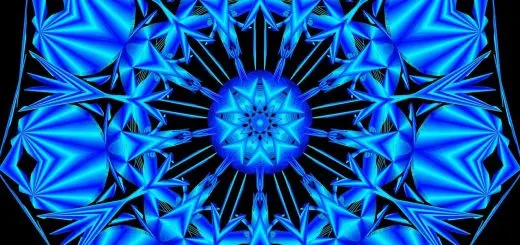Zhang Jiao: Founder of the Yellow Turban Rebellion

Looking for more amazing products? Check out our online store and explore our collection here! Happy shopping!
Before diving in, please note: This post is for informational purposes only. If you’d like to know more about how we approach topics, feel free to check out our friendly Disclaimer Page.
Hey there, amazing readers! 
We’re committed to delivering quality posts, and your support (even just sticking around despite the ads) means everything to us. So, bear with us, and thanks for helping us keep the good vibes rolling. Now, on to the fun stuff!
TRANSLATE BUTTON AT THE END OF THE ARTICLE
Overview
Zhang Jiao, the founder of the Yellow Turban Rebellion, played a significant role in the history of China during the late Eastern Han Dynasty.
This rebellion was one of the largest and most influential peasant uprisings in Chinese history, challenging the corrupt and oppressive government system of the time.
Zhang Jiao, with his charismatic leadership and radical ideology, was able to gather a massive army of followers and pose a serious threat to the ruling class.
This article explores the life, beliefs, and impact of Zhang Jiao and the Yellow Turban Rebellion.
Early Life and Background of Zhang Jiao
Zhang Jiao was born in the Eastern Han Dynasty, during a time of social unrest and economic difficulties.
Little is known about his early life, but it is believed that he came from a humble background in the region of Julu, present-day Hebei province.
Zhang Jiao was drawn to the study of ancient texts, particularly those related to Taoism, and became a self-proclaimed healer and prophet.
He gained a reputation for his spiritual and mystical abilities, which attracted a growing number of followers seeking guidance and hope in troubled times.
The Rise of the Yellow Turban Rebellion
As the Eastern Han Dynasty faced numerous problems, such as corruption, famine, and banditry, Zhang Jiao saw an opportunity to challenge the ruling class and bring about change.
In the year 184, he founded the Yellow Turban Rebellion, named after the yellow headbands worn by his followers as a symbol of their solidarity.
The rebellion quickly gained momentum and spread throughout northern China, with peasants and disaffected individuals joining the cause.
Zhang Jiao effectively tapped into the frustrations and grievances of the lower classes, promising a new era of equality, justice, and prosperity.
Zhang Jiao’s Ideology and Beliefs
Zhang Jiao’s ideology was heavily influenced by Taoism, particularly the belief in divine intervention and the concept of the "Way." He claimed to be the younger brother of the celestial beings known as the "Three Sovereigns," and preached the imminent arrival of the "Great Peace" era.
Zhang Jiao propagated the idea that through ceremonies, prayers, and rituals, one could commune with the heavens and receive blessings.
He promised his followers supernatural powers and deliverance from their sufferings, giving them a renewed sense of hope and purpose.
Organizational Structure of the Yellow Turbans
The Yellow Turbans had a hierarchical organizational structure, with Zhang Jiao at the top as the supreme leader.
He was assisted by his two brothers, Zhang Bao and Zhang Liang, who acted as his lieutenants.
Below them were regional leaders who oversaw smaller divisions, ensuring that the rebellion’s activities were coordinated and carried out effectively.
The lower ranks of the Yellow Turbans were made up of ordinary followers who were organized into units based on their geographical proximity.
This structure allowed for effective communication, recruitment, and the mobilization of forces across different regions.
Zhang Jiao’s Role as the Rebellion’s Leader
Zhang Jiao played a crucial role in leading, motivating, and inspiring the Yellow Turbans.
As a charismatic and persuasive figure, he was able to rally a diverse group of followers under a common cause.
Zhang Jiao conducted religious ceremonies, delivered passionate speeches, and performed supposed miracles to instill faith and zeal among his supporters.
He was also responsible for the strategic planning and decision-making of the rebellion, including the coordination of attacks on government forces and the distribution of resources.
Goals and Objectives of the Yellow Turban Rebellion
The primary goal of the Yellow Turban Rebellion was to overthrow the corrupt and oppressive government of the Eastern Han Dynasty.
The rebels aimed to establish a new social order based on equality, justice, and the principles of Taoism.
Zhang Jiao promised to eradicate social inequalities, abolish harsh taxes, and provide relief to the impoverished masses.
The rebellion also sought to challenge the influence of the ruling class, particularly the eunuchs who held significant power within the government.
Ultimately, the Yellow Turban Rebellion aimed to bring about a new era of peace and prosperity for the people of China.
The Yellow Turban Rebellion’s Impact on China
The Yellow Turban Rebellion had a profound impact on China, both during its active phase and in its aftermath.
The rebellion exposed the deep-rooted social and economic issues faced by the lower classes, highlighting the vast disparities between the elite and the peasantry.
It also revealed the weaknesses and corruption within the government, leading to a loss of faith and trust in the ruling class.
The rebellion’s widespread support and large-scale mobilization demonstrated the potential power of the masses, challenging the traditional hierarchy and social order.
Challenges Faced by Zhang Jiao and the Rebellion
Zhang Jiao and the Yellow Turbans faced several challenges throughout their campaign.
One of the key challenges was maintaining unity and discipline among the diverse group of followers.
The rebellion attracted individuals from different backgrounds and regions, making it difficult to foster a cohesive and disciplined force.
Additionally, the lack of military expertise and resources posed significant obstacles in their confrontations with the well-trained and well-equipped government forces.
The rebellion also struggled to gain the support of influential figures within the ruling class, limiting their ability to form alliances and gain legitimacy.
Government Response to the Yellow Turban Rebellion
The government of the Eastern Han Dynasty responded to the Yellow Turban Rebellion with both military force and political reforms.
Initially, the government underestimated the scale and threat of the rebellion, but as it grew in strength, they mobilized their armies to suppress the uprising.
The government also implemented measures to address the grievances of the lower classes, such as reducing taxes and improving governance.
However, these reforms were largely ineffective in quelling the rebellion, as they were perceived as insincere and superficial.
Ultimately, it was military force that led to the defeat of the Yellow Turbans.
Legacy of Zhang Jiao and the Yellow Turban Rebellion
Although the Yellow Turban Rebellion was ultimately crushed by the government forces, its legacy was far-reaching.
The rebellion exposed the deep-rooted issues within the ruling class, contributing to the decline of the Eastern Han Dynasty.
It also paved the way for future peasant uprisings and laid the groundwork for the later Three Kingdoms period.
Zhang Jiao’s radical ideology and charismatic leadership influenced subsequent rebellions and movements, inspiring future generations to challenge oppressive systems and fight for social justice.
The Yellow Turban Rebellion remains an important chapter in Chinese history, highlighting the power of collective action and the struggle for equality and justice.
Conclusion
Zhang Jiao, as the founder of the Yellow Turban Rebellion, played a significant role in the history of China.
His charismatic leadership, radical ideology, and ability to mobilize a large army of followers challenged the ruling class of the Eastern Han Dynasty.
Despite facing numerous challenges and ultimately being defeated, the Yellow Turban Rebellion had a profound impact on China.
It exposed the deep-rooted social and economic issues faced by the lower classes, revealed the weaknesses and corruption within the government, and paved the way for future uprisings and movements.
Zhang Jiao’s legacy continues to inspire generations to fight for social justice and challenge oppressive systems.

The Enlightenment Journey is a remarkable collection of writings authored by a distinguished group of experts in the fields of spirituality, new age, and esoteric knowledge.
This anthology features a diverse assembly of well-experienced authors who bring their profound insights and credible perspectives to the forefront.
Each contributor possesses a wealth of knowledge and wisdom, making them authorities in their respective domains.
Together, they offer readers a transformative journey into the realms of spiritual growth, self-discovery, and esoteric enlightenment.
The Enlightenment Journey is a testament to the collective expertise of these luminaries, providing readers with a rich tapestry of ideas and information to illuminate their spiritual path.
Our Diverse Expertise
While our primary focus is on spirituality and esotericism, we are equally passionate about exploring a wide range of other topics and niches 

To ensure we provide the most accurate and valuable insights, we collaborate with trusted experts in their respective domains 
Our blog originally focused on spirituality and metaphysics, but we’ve since expanded to cover a wide range of niches. Don’t worry—we continue to publish a lot of articles on spirituality! Frequently visit our blog to explore our diverse content and stay tuned for more insightful reads.
Hey there, amazing reader! 
Check out our store here and take a peek at some of our featured products below! Thanks for being awesome!













